2022 Ford F-150 Lightning First Drive - Ready for Duty

The words ‘all-new’ and ‘seismic shift’ are too frequently hurled around by those who peck their way around a keyboard between visits to shrimp-laden buffet tables. Still, when the country’s best-selling vehicle – the image of which is so closely tied to America that it might as well have a baseball hat and an apple pie in its glovebox – is fitted with an entirely new method of powering its way down the freeway and around job sites, even the j-j-jaded TTAC team will sit up and take interest.
Compared to other efforts in the electric pickup truck space, such as ridiculously angular examples loudly and annoyingly defended by fanbois jihads groups of rabid admirers, the Ford F-150 Lightning actually exists in vast numbers and is actively being cranked out of a factory near Detroit. There’s no shortage of vaporware in the EV truck segment, with numerous Barnum-like companies making grandiose promises amounting to naught, taking the hopes and cash of others down along with them.
With the F-150 Lightning, Ford is definitely *not* peddling vaporware. It’s here, it’s real, and we drove several examples last week in – where else? – Texas.
Toiling at this outlet for over a decade has provided several lessons, not the least of which is the knowledge you lot in the B&B prefer base trims to the options-laden examples which are usually on offer at drive events. To be blunt, your authors here generally agree. That’s why we jockeyed to snag the keys to a Pro trim truck, a model with vinyl seats and a rubber floor which represents the least expensive end of Ford’s snazzy new all-electric pickup truck.
(Full disclosure: Ford paid for flights, food, and housing in San Antonio, Texas, so that we could drive the new Lightning.)
It’s the trim bearing the much-touted sticker price of $39,974. Despite its lot in life as an entry-level rung on the totem pole, it packs permanent four-wheel drive thanks to dual inboard electric motors, a whopping 775 lb-ft of torque, and 230 miles of range from its 98 kWh battery pack. The slick and useful frunk – providing 14 cubic feet of weather-protected cargo space and a quartet of 120V outlets ready to charge yer DeWalt drill batteries or Igloo cooler – is part of the deal, as are Ford’s Co-Pilot 360 suite of active driver aids and luxuries like dual-zone climate control. In fact, it’s even equipped with an infotainment screen robbed from the most-expensive gas-powered F-150 pickup. While the urethane wheel and undamped tailgate are ready for work, they’re accompanied by a lot of the tech many drivers like – even if they won’t admit it to their hardhat buddies. Lightning’s cabin is like any other F-150, which is a good thing.
2022 Ford F-150 Lightning Pro
2022 Ford F-150 Lightning Platinum
For a further 10 grand, fleet customers can step up to a Pro with the 131kWh extended range battery or all hands can opt for that powertrain in an XLT, Lariat, or Platinum. This brings 580 all-electric horses to the stable, an equal amount of torque as standard range trucks, and a driving range of 320 miles (save for Platinum whose 22-inch rimz shave range to 300 miles). It’s that power team we wheeled in the Lone Star state over a mix of congested traffic, country roads, and steady-state highway driving. EVs perform most poorly in the latter since there are few energy regeneration opportunities, which is the inverse of gasoline-powered trucks who generally get their best economy on the highway. We averaged an energy consumption of 2.0mi/kWh over 105 miles, spiking to an average of 2.8 during a stretch of heavy traffic in which the truck aggressively regenerated power through one-pedal driving. To reach the advertised 320-mile range rating, one would have to hit an average of 2.44; improbable but not impossible. Assuming an electric economy of 2.0mi/kWh, the extended range battery pack would be exhausted in 262 miles.
Anyone who’s driven an empty pickup truck will know the light feeling in its aft section thanks to a cargo box generally filled with air. The Lightning solves that problem with its liquid-cooled battery pack, a candy-bar-shaped unit that Ford engineers told us weighs about 1,600 lbs and spans the truck between its front and rear tires. The truck feels planted, thanks to a center of gravity several inches lower and a few inches rearward compared to an EcoBoost F-150. Lightning’s powertrain silence is a trip, permitting one to hear rain splash against the rocker panels and every single highway expansion joint. Steering is quick, almost too quick for a truck, but is tempered in trailering mode which we’ll talk about in a moment. So-called ‘one-pedal driving’ helps regenerate precious energy but takes acclimation if one is used to letting their truck coast to a stop.
For stats nerds, know the Lightning has about half an inch less ground clearance than most trims of a gasoline-powered SuperCrew 4×4, the closest allegory since that is the sole cab configuration in which the Lightning is (presently) offered. Cab height, width, track – all are within a hair when comparing the electric truck to its petrol brothers. Even its off-road measures of approach and departure angles are within a pencil’s width of each other, though breakover suffers by 1.2 degrees thanks to that half-inch difference in ground clearance.
Speaking of, Ford didn’t shy away from allowing us to put the Lightning in tough off-road spots. A muddy water crossing led into a field of jagged rocks, all of which quickly became slicker than snot on a doorknob after a dozen or so trucks passed through the area. Silent off-roading is alien, permitting the driver to hear every pebble and squeak of tire. Finessing the truck’s power took more throttle control than usual thanks to the power delivery nature of an electric vehicle but the Lightning handled the course well with its weak spot being the pavement-focused rubber. Slapping a set of meaty KO2s on each corner would solve this problem at the expense of range.
Which neatly brings us to the question everyone wants answered: How is range affected by truck-like tasks such as heavy payload and towing? We first sampled a Pro with 20 sheets of ¾-inch plywood in its bed, a weight Ford claimed to be roughly 1,500 pounds. This jives with your author’s estimate that each 4×8 sheet of the stuff weighs about 70 lbs; also, at today’s prices, it is not disingenuous to suggest they collectively cost more than your author’s first car. Our second weight test was a boxy horse trailer laden with 5,000 pounds. Both trucks had the extended range powertrain.
Recall our unladen energy consumption from earlier – 2.0mi/kWh spiking to 2.8 in heavy traffic. The payload test saw that number drop to a consistent 1.5 mile per kWh, though it was possible to get it under 1.0 while driving like a fool. The even weight distribution we enjoyed during our unladen drive was altered by this payload, putting a lot of mass on the truck’s rear. In fact, it was easy to light up the front tires while accelerating very hard in this scenario – not that you should with 1,500lbs of plywood in the box.
Trailering with a Platinum trim was a similar story though weight distribution was less of an issue – and if you know anything about trailering, you understand why. A 5,000 lb trailer (half this truck’s max) will have about 500 pounds of tongue weight pressing down on the truck’s hindquarters, one-third of what was loaded aboard our payload tester. This solved the lighter-than-air front-end feeling exhibited in the plywood-laden truck. Acceleration was brisk given the right now availability of diesel-like torque numbers, though the truck’s silent powertrain exacerbated every single squeak and rattle which perpetually emanates from tow behinds. If you think yer metal boat trailer is annoying now, wait until you hitch it to a Lightning. Energy consumption dropped to an indicated average of 1.3 mile per kWh thanks to the trailer’s mass and boxy shape.
Put in traditional terms, that means a battery-powered Lightning will get roughly between half and two-thirds of its unladen economy when towing or hauling. Surprisingly, this is decently on par with the losses one experiences with a comparable gasoline-powered EcoBoost; personal experience has proven I can eke out 10 mpg when towing with a 3.5L-equipped F-150 compared to its unladen performance of about 20 mpg combined. The biggest difference, of course, is one is starting from a smaller range with the Lightning than with an EcoBoost; two-thirds of 320 miles is a lot less than two-thirds of 520 miles. One thought: Adding weight in the form of a payload or a trailer permits aggressive energy regeneration during downhill stretches, something a gasoline-powered sample cannot accomplish.
As for price, an equivalently optioned PowerBoost (the closest parallel in terms of power) is about $12,000 less expensive before taxes and a maze of rebates than a comparably equipped extended-range Lightning.
There’s plenty more to cover, including Lightning’s trick ability to power one’s home to the tune of 9.4kW and a set of slick onboard weigh scales, but we’ll detail that in a separate post so as not to subject readers to a 3,000-word tome. Look for that tomorrow as we spread out coverage. Our driving impressions and real-world range estimates while using the thing like a real truck suggest the 2022 Ford F-150 Lightning is a sledgehammer to the face of companies peddling electric vaporware.
[Images © 2022 Matthew Guy/TTAC]

Matthew buys, sells, fixes, & races cars. As a human index of auto & auction knowledge, he is fond of making money and offering loud opinions.
More by Matthew Guy
Latest Car Reviews
Read moreLatest Product Reviews
Read moreRecent Comments
- TheEndlessEnigma I would mandate the elimination of all autonomous driving tech in automobiles. And specifically for GM....sorry....gm....I would mandate On Star be offered as an option only.Not quite the question you asked but.....you asked.
- MaintenanceCosts There's not a lot of meat to this (or to an argument in the opposite direction) without some data comparing the respective frequency of "good" activations that prevent a collision and false alarms. The studies I see show between 25% and 40% reduction in rear-end crashes where AEB is installed, so we have one side of that equation, but there doesn't seem to be much if any data out there on the frequency of false activations, especially false activations that cause a collision.
- Zerocred Automatic emergency braking scared the hell out of me. I was coming up on a line of stopped cars that the Jeep (Grand Cherokee) thought was too fast and it blared out an incredibly loud warbling sound while applying the brakes. I had the car under control and wasn’t in danger of hitting anything. It was one of those ‘wtf just happened’ moments.I like adaptive cruise control, the backup camera and the warning about approaching emergency vehicles. I’m ambivalent about rear cross traffic alert and all the different tones if it thinks I’m too close to anything. I turned off lane keep assist, auto start-stop, emergency backup stop. The Jeep also has automatic parking (parallel and back in), which I’ve never used.
- MaintenanceCosts Mandatory speed limiters.Flame away - I'm well aware this is the most unpopular opinion on the internet - but the overwhelming majority of the driving population has not proven itself even close to capable of managing unlimited vehicles, and it's time to start dealing with it.Three important mitigations have to be in place:(1) They give 10 mph grace on non-limited-access roads and 15-20 on limited-access roads. The goal is not exact compliance but stopping extreme speeding.(2) They work entirely locally, except for downloading speed limit data for large map segments (too large to identify with any precision where the driver is). Neither location nor speed data is ever uploaded.(3) They don't enforce on private property, only on public roadways. Race your track cars to your heart's content.
- GIJOOOE Anyone who thinks that sleazbag used car dealers no longer exist in America has obviously never been in the military. Doesn’t matter what branch nor assigned duty station, just drive within a few miles of a military base and you’ll see more sleazbags selling used cars than you can imagine. So glad I never fell for their scams, but there are literally tens of thousands of soldiers/sailors/Marines/airmen who have been sold a pos car on a 25% interest rate.


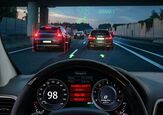

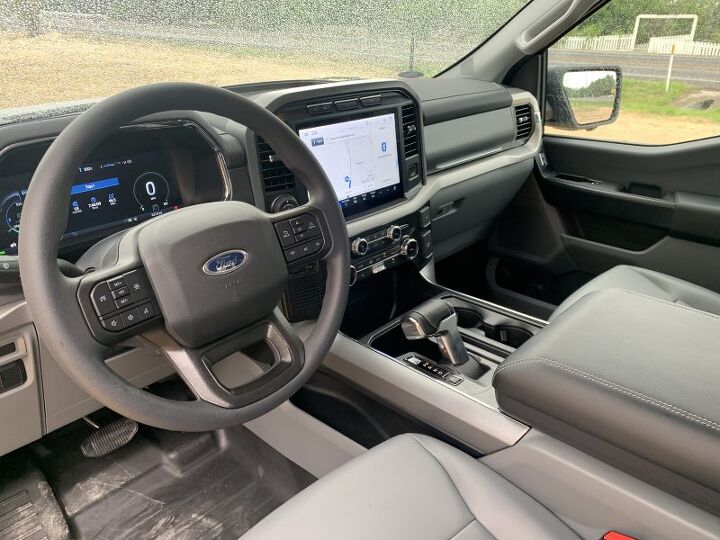


















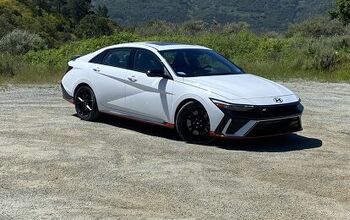

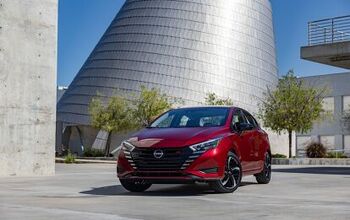

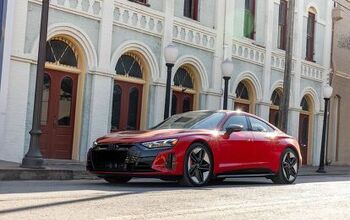


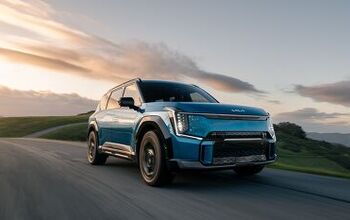

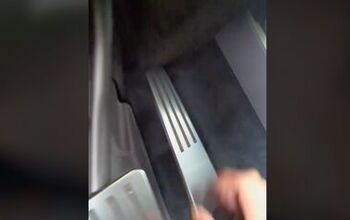
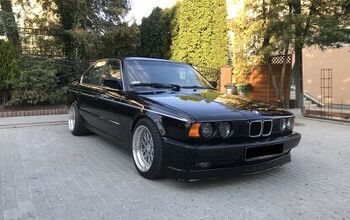
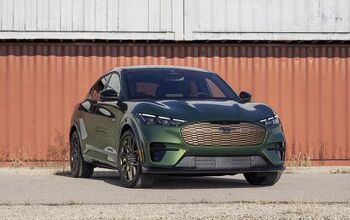
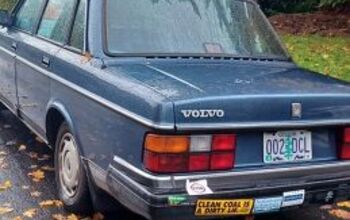
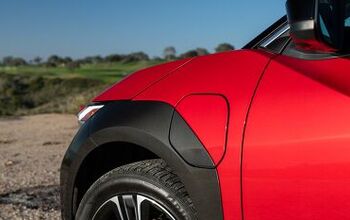



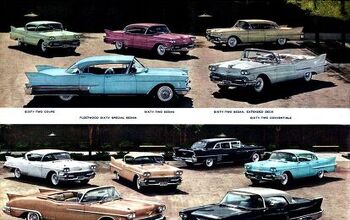
Comments
Join the conversation
5.5 foot bed only? If I've got that right, not a real truck. Hope I'm wrong.....
This is it. This is where the rubber hits the road. If the Lightning can succeed, the entire EV transition can succeed. (And "succeed" won't mean that every single ICE vehicle is replaced—it will mean that enough vehicles are EVs to seriously reduce our transportation carbon emissions.) As things stand today, the Lightning will work just fine for virtually every application where people use pickups within a metro area. It will not work for people who haul long distances. And that's fine. Hotshotters and the like, along with the sort of hobbyists who are always towing trailers hundreds of miles, will have ICE trucks for a long time. It will make a huge difference in a lot of ways if (1) the day-use fleets and (2) the everyday commuters who use trucks eventually go electric. The biggest thing it needs isn't more capability, but a lower price. The last couple years have stopped the previously consistent drop in battery prices, but if we can ever get our supply chains untangled again there are lots of promising battery tech improvements in the pipeline, so a lower price should eventually be reality.